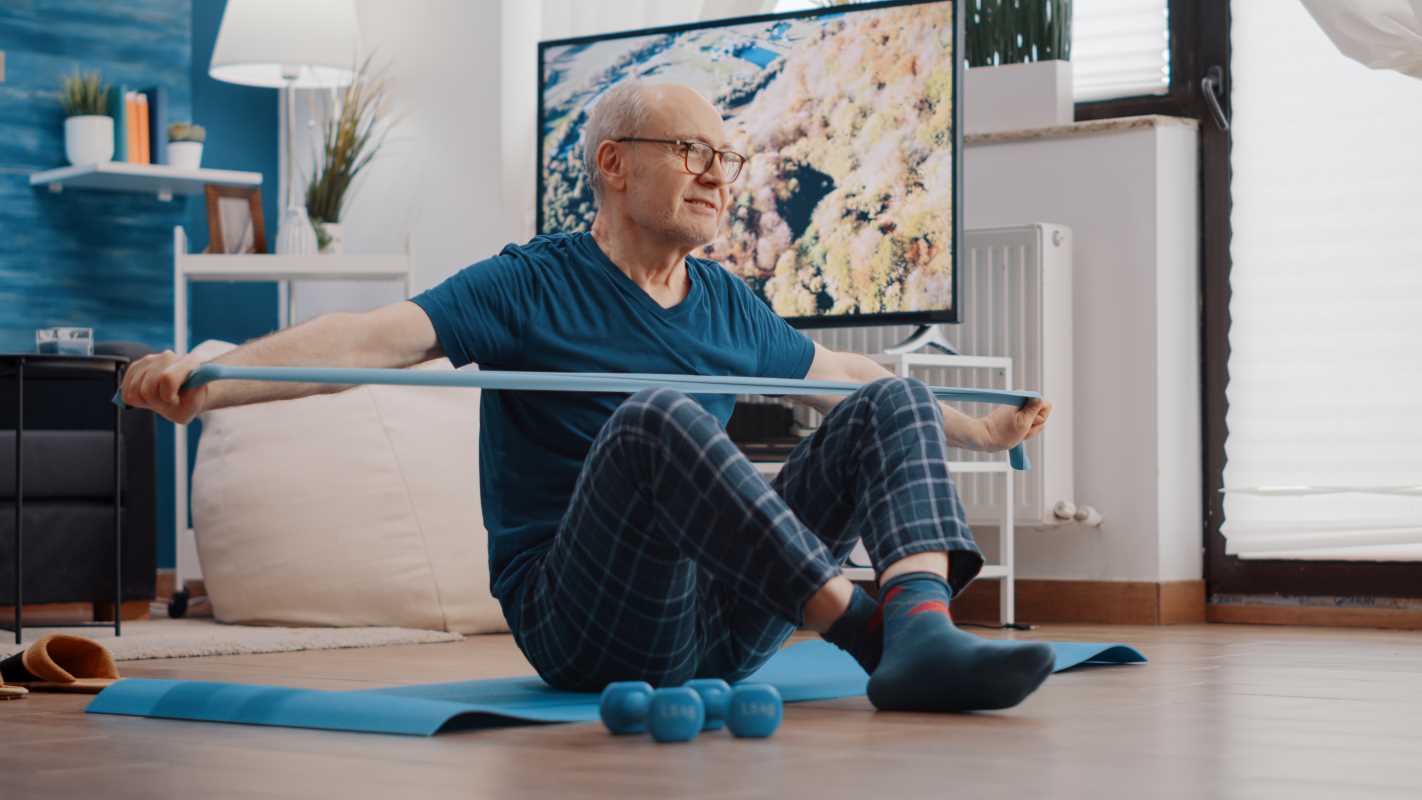Regular physical activity is crucial for maintaining physical health, boosting mental well-being, and enhancing overall quality of life. However, with busy schedules and competing priorities, many people struggle to maintain a consistent workout routine. One practical solution is creating a home exercise plan that fits your lifestyle and goals. A well-structured home routine allows flexibility, saves time, and can be as effective as going to the gym. This guide offers tips on designing a routine that suits your fitness level, time constraints, and personal preferences. You can stay committed and achieve lasting health benefits with the right approach.
1. Setting Realistic Goals
Start your home fitness journey by setting specific, achievable goals.
- Identify Your Objectives: Determine whether your focus is weight loss, muscle building, flexibility, or staying active.
- Break Down Your Goals: Instead of aiming to lose 20 pounds monthly, set smaller milestones like losing 1–2 pounds per week.
- Track Your Progress: Keep a journal or use fitness apps to monitor your workouts and achievements. For instance, tracking daily steps or recording your lifting progress can keep you motivated.
Pro Tip: Goals that are specific, measurable, achievable, relevant, and time-bound (SMART) are more likely to keep you on track.
2. Creating a Schedule
Consistency is the foundation of any successful fitness routine.
- Choose Your Ideal Time: Whether it’s early morning, lunch breaks, or evenings, pick a time that fits seamlessly into your day.
- Set a Routine: Start with three to four days per week and gradually increase as your stamina improves.
- Use Reminders: Set alarms or calendar notifications to establish exercise as a non-negotiable part of your routine.
Example: If mornings are too hectic, dedicate 30 minutes after work to an energizing HIIT session or a calming yoga flow.
3. Incorporating Variety in Workouts
Avoid monotony by diversifying your exercises to target different muscle groups and maintain enthusiasm.
- Mix It Up: Combine:
- Cardio (e.g., jogging in place, jump rope).
- Strength Training (e.g., push-ups, resistance band exercises).
- Flexibility Work (e.g., yoga or stretching routines).
- Try New Styles: Explore fun alternatives like dance workouts, martial arts-inspired routines, or online challenges.
- Cycle Intensity: Alternate between high-intensity workouts and lighter recovery days to prevent burnout.
Example: A weekly plan could include a 20-minute cardio session on Monday, strength training on Wednesday, yoga on Friday, and a mix of cardio and strength on Sunday.
4. Utilizing Home Fitness Equipment
You don’t need an expensive gym membership to achieve fitness goals.
- Essential Tools:
- Dumbbells or kettlebells for strength.
- Resistance bands for versatile exercises.
- Yoga mats for comfort during floor exercises.
- A stability ball for core and balance training.
- DIY Solutions: Use water bottles as weights or a sturdy chair for tricep dips.
Pro Tip: Invest gradually, starting with inexpensive equipment and expanding as your commitment grows.
5. Creating a Supportive Environment
Your workout space plays a significant role in maintaining motivation.
- Declutter: Clear a dedicated space for exercise, even if it’s a corner of your living room.
- Personalize Your Space: Add inspiring quotes, fitness posters, or houseplants for a positive vibe.
- Set the Mood: Play energizing playlists or follow virtual classes for guided energy.
Example: A small home gym setup with a mirror, resistance bands, and a Bluetooth speaker can elevate the experience.
6. Listening to Your Body
Prioritizing your health over-pushing through discomfort is vital.
- Pay Attention to Signals:
- If you feel pain, stop immediately and reassess.
- If you’re fatigued, opt for lighter exercises or active recovery.
- Rest Days: Schedule rest days to allow muscles to repair and grow.
- Adjust Workouts: Modify intensity or duration based on your energy levels.
Pro Tip: Incorporate stretching before and after workouts to reduce the risk of injury.
7. Staying Motivated
Maintaining enthusiasm can be challenging, but small strategies can make a big difference.
- Set Milestones: Reward yourself for meeting goals, like buying new workout gear after completing a month of consistent workouts.
- Find Accountability: Share progress with a friend, join online fitness communities, or participate in virtual workout challenges.
- Celebrate Small Wins: Progress isn’t always about the scale—recognize increased stamina or better mental clarity as achievements.
8. Tracking Progress and Adjusting Goals
Over time, your fitness level will evolve, and so should your goals.
- Evaluate Regularly: Assess your routine every few weeks. Are you progressing toward your goals? If not, tweak your exercises or schedule.
- Increase Difficulty: Add more repetitions, increase weights, or extend workout durations to keep challenging your body.
- Revisit Goals: Set new goals to maintain momentum as you meet initial objectives.
Creating and maintaining a home exercise routine is a manageable and effective way to stay active. By setting clear goals, scheduling regular workouts, incorporating variety, and building a supportive environment, you can achieve long-term success. Stay consistent, listen to your body, and enjoy the journey to improved health and well-being.
 (Image via
(Image via





